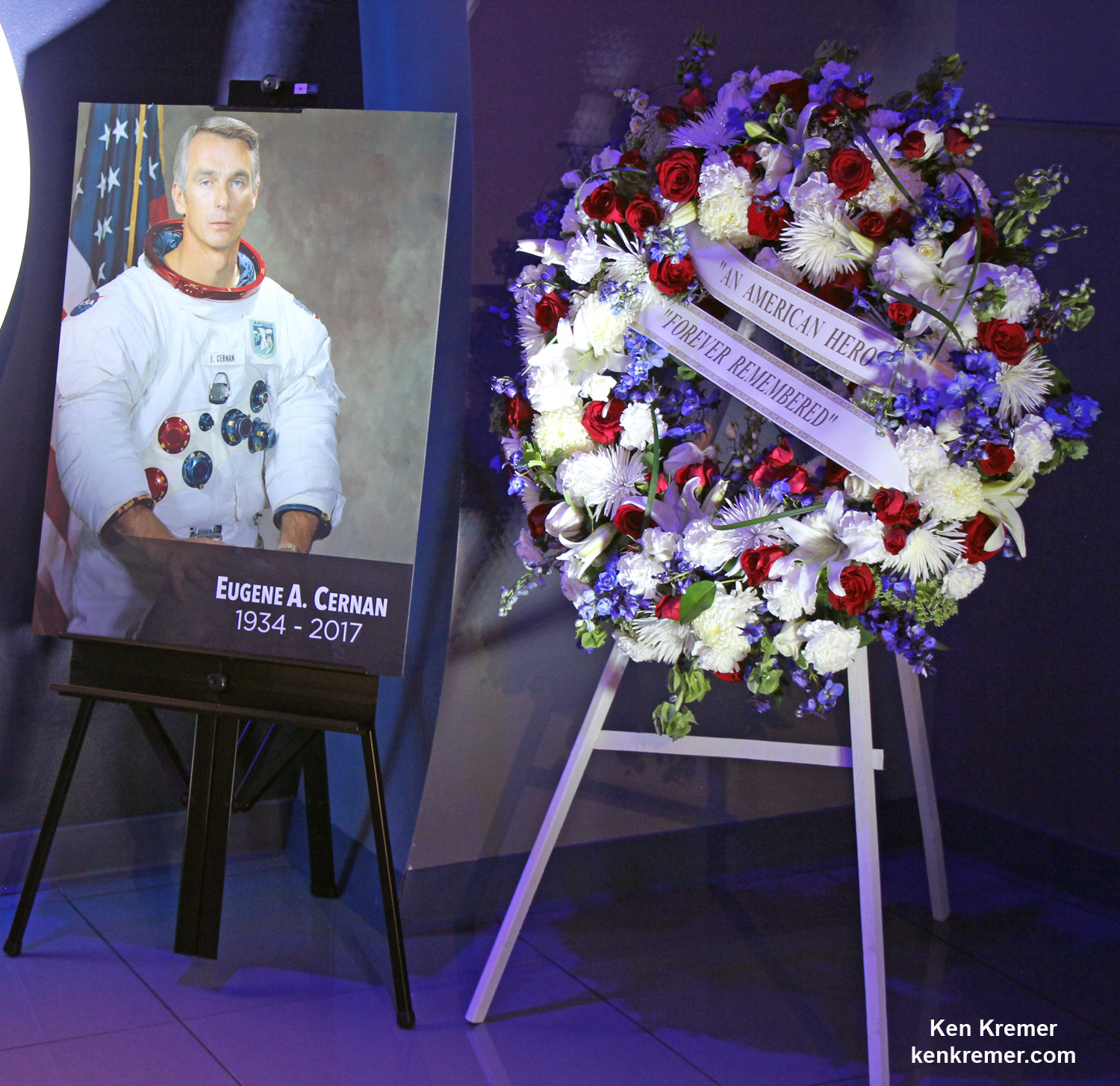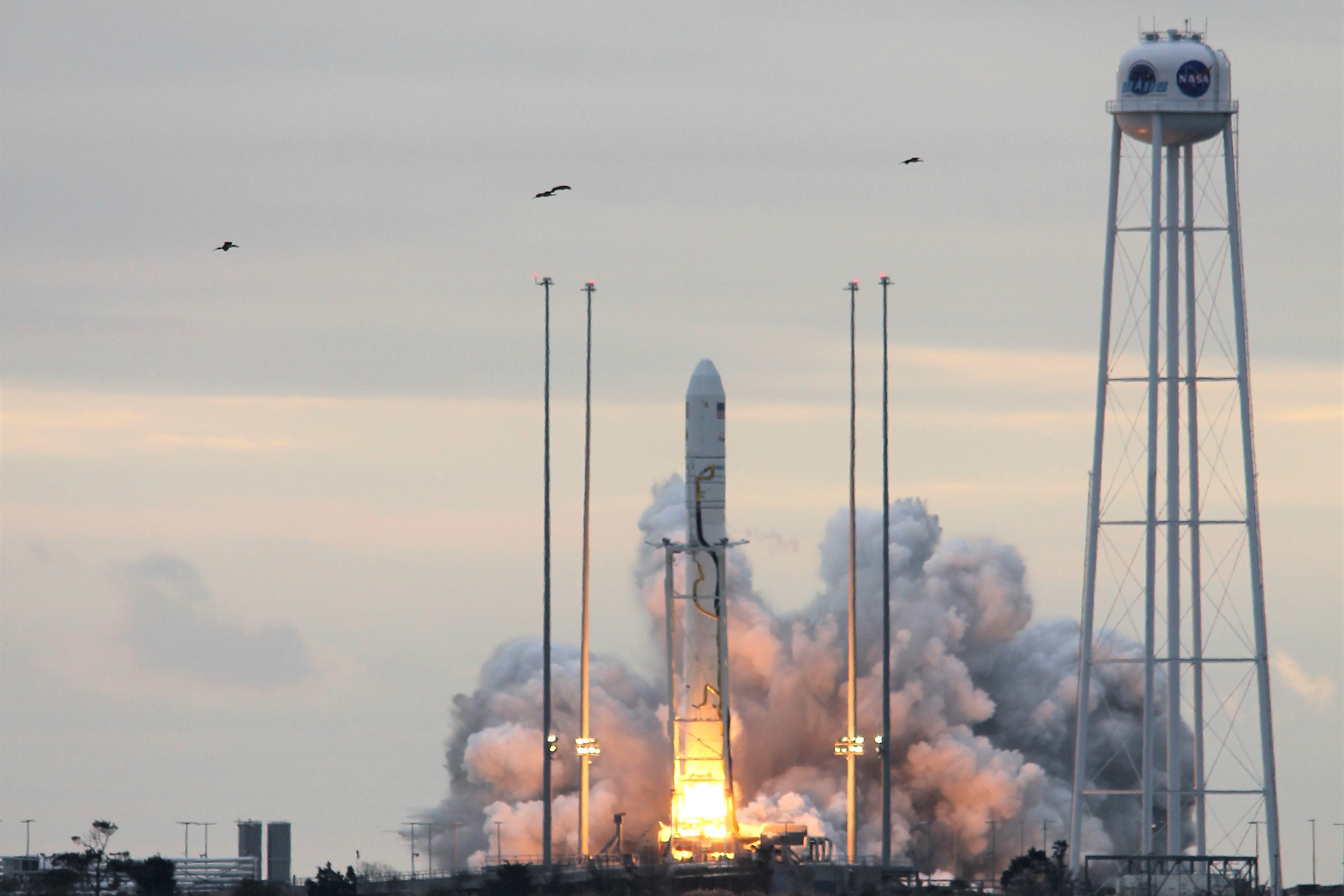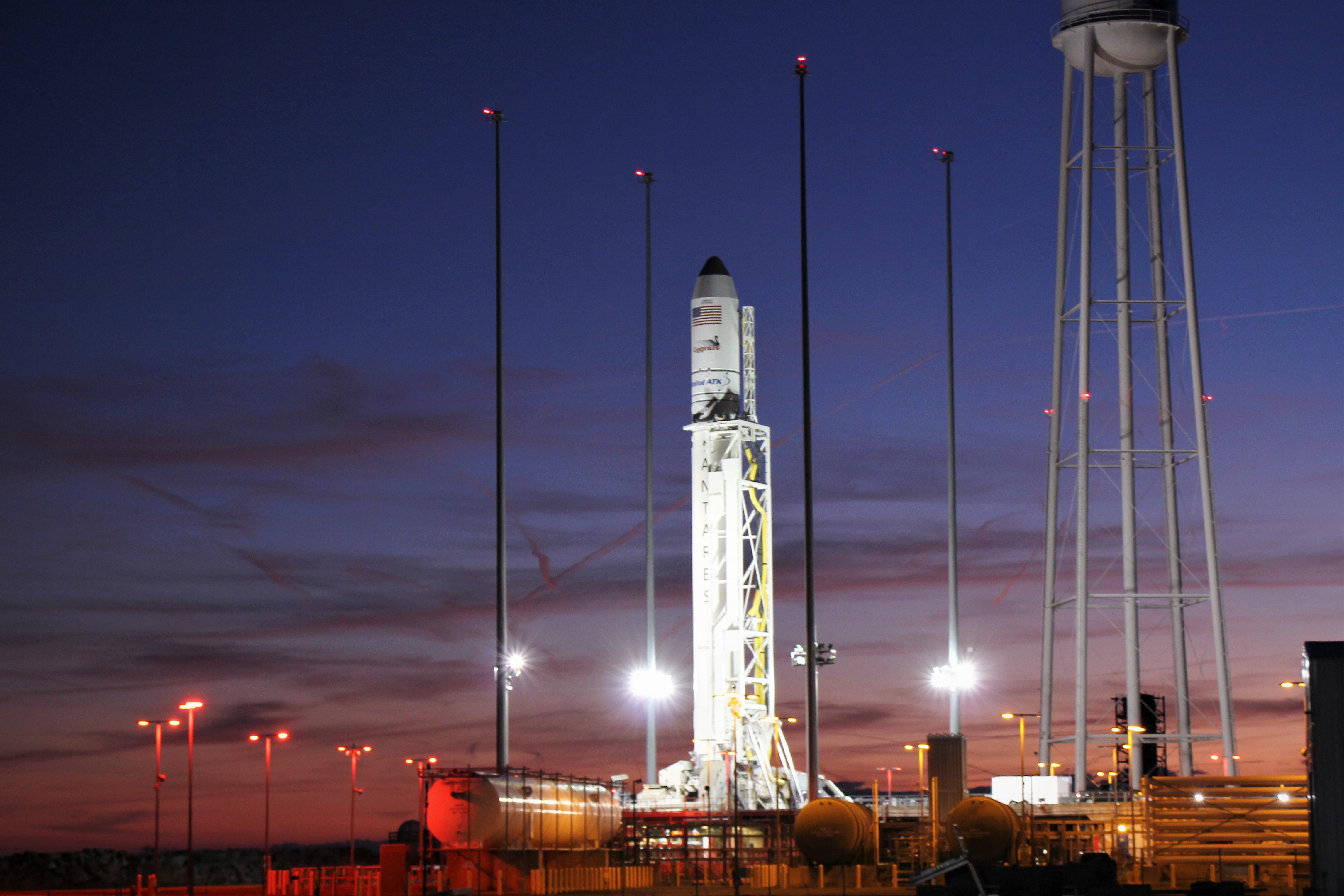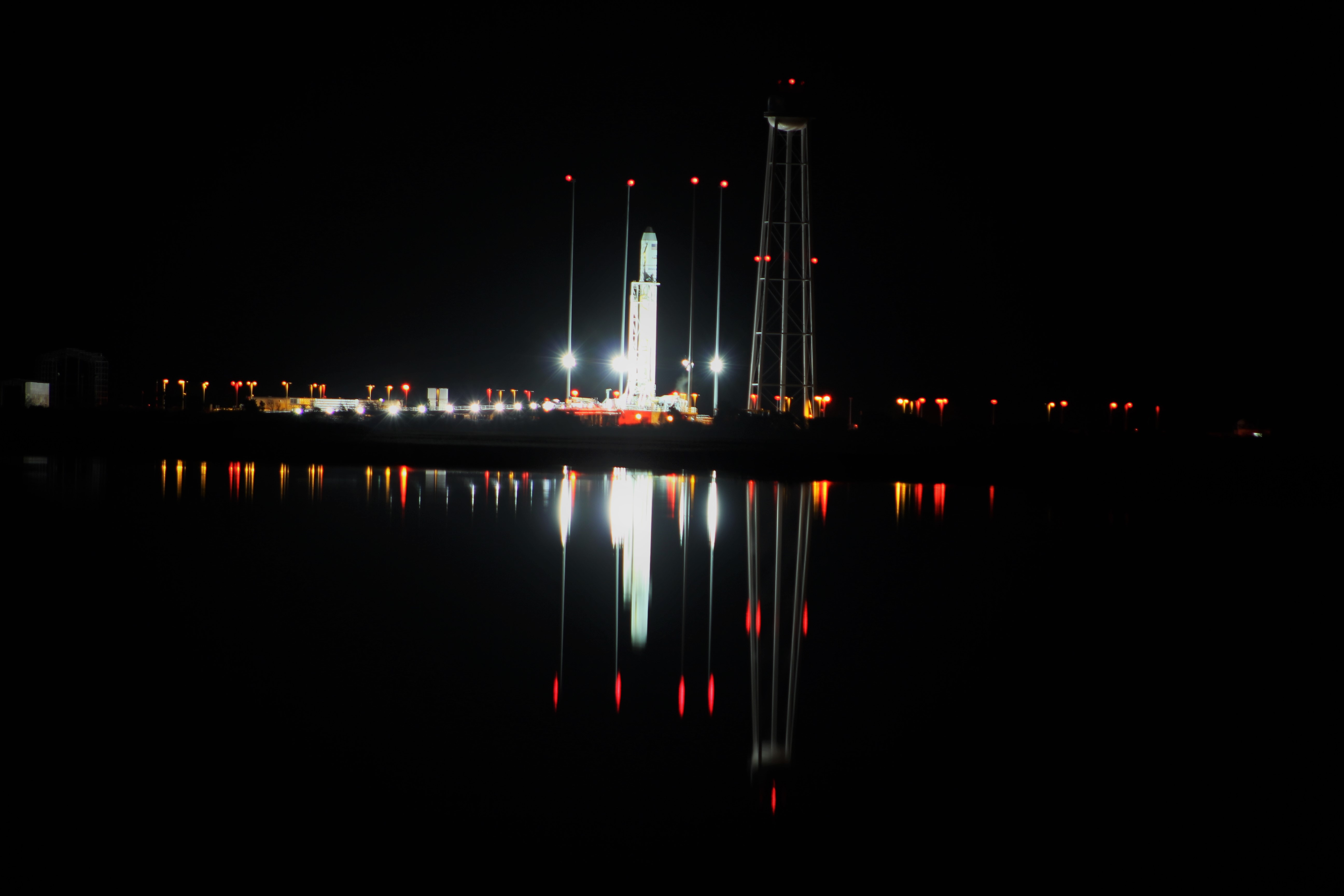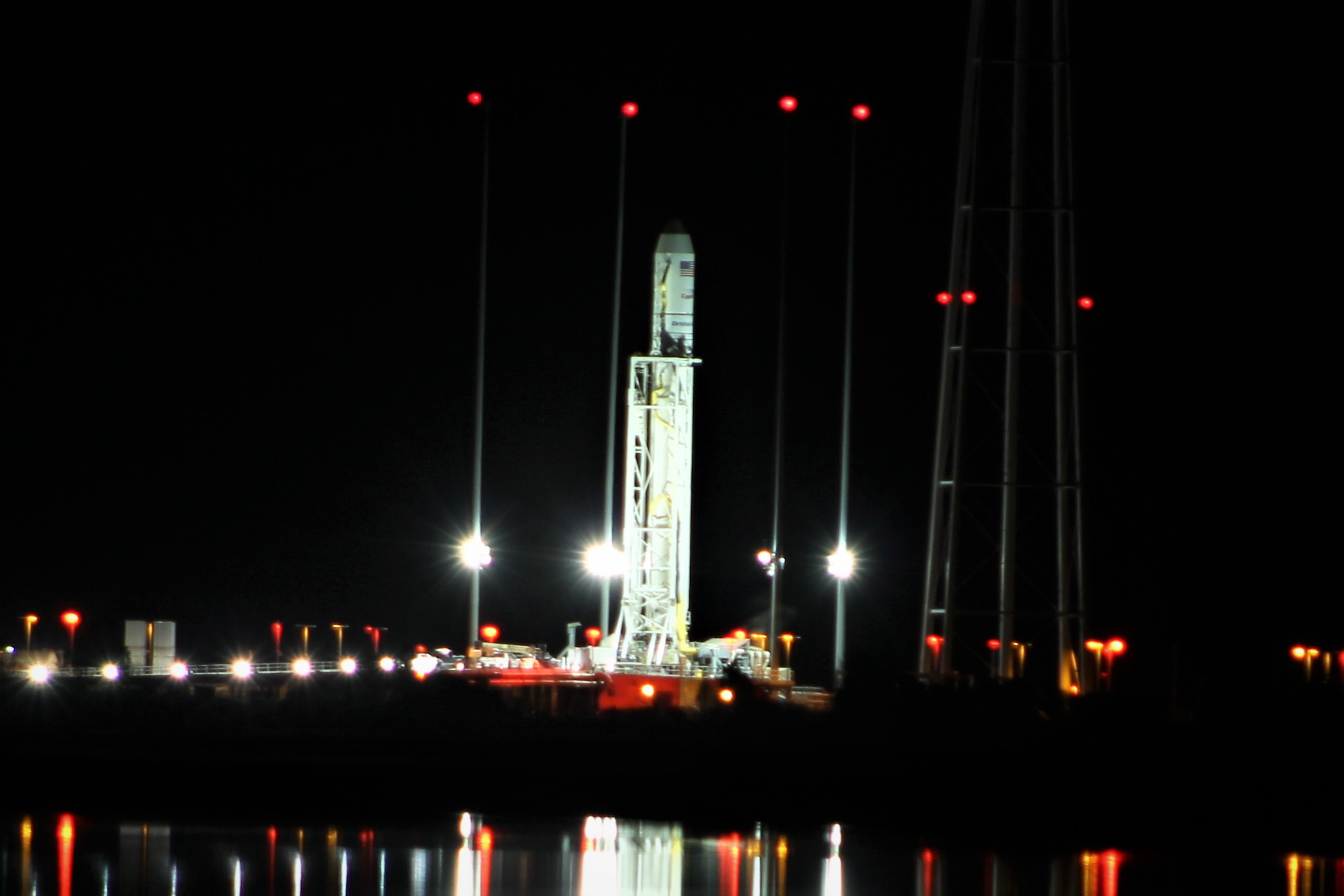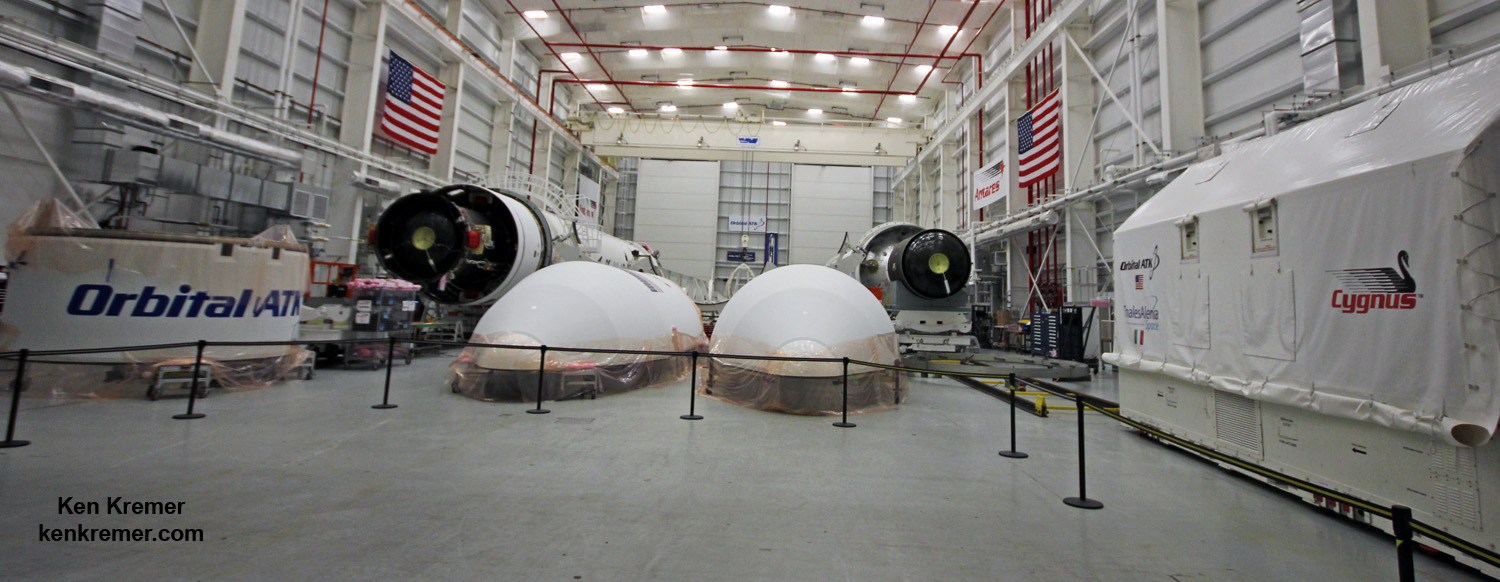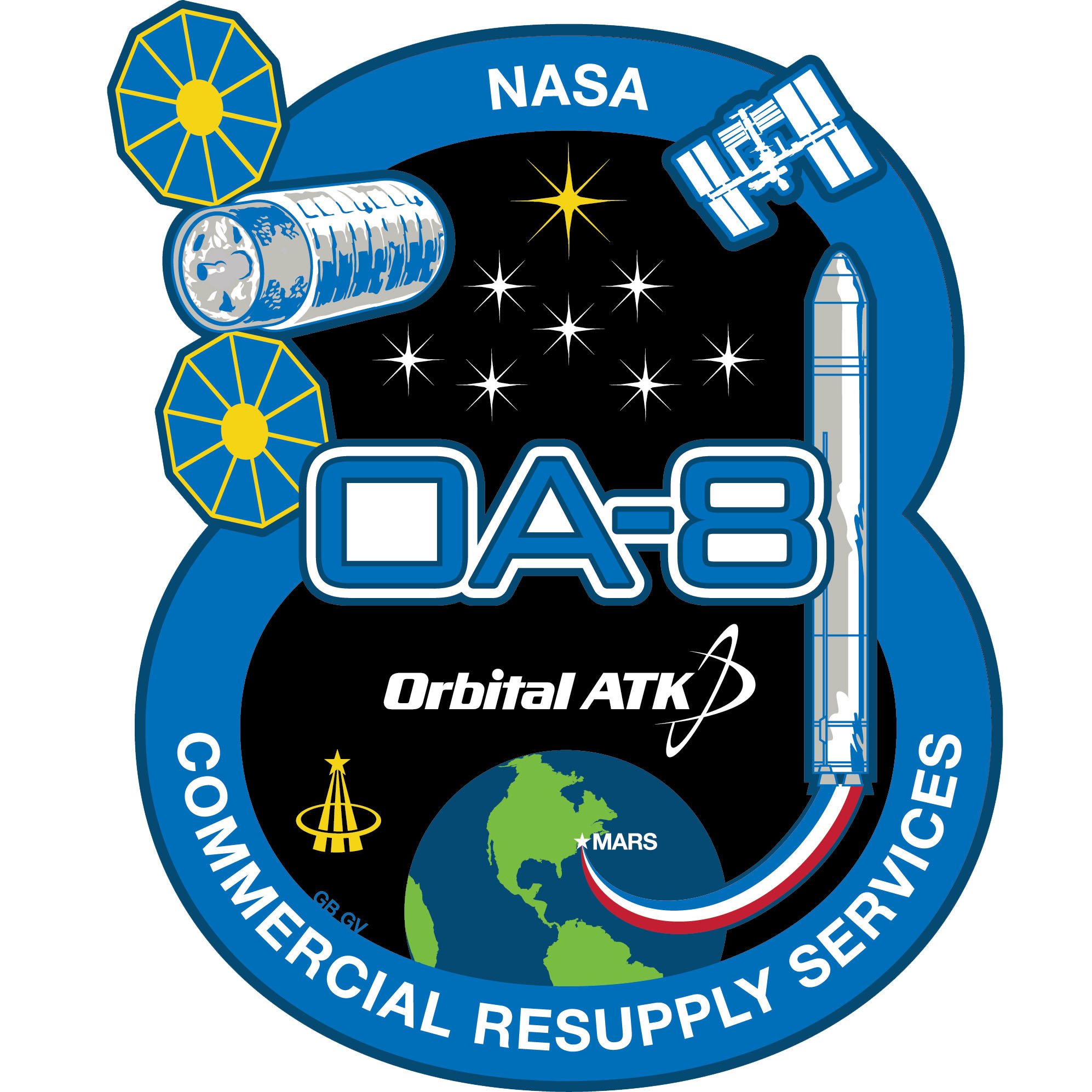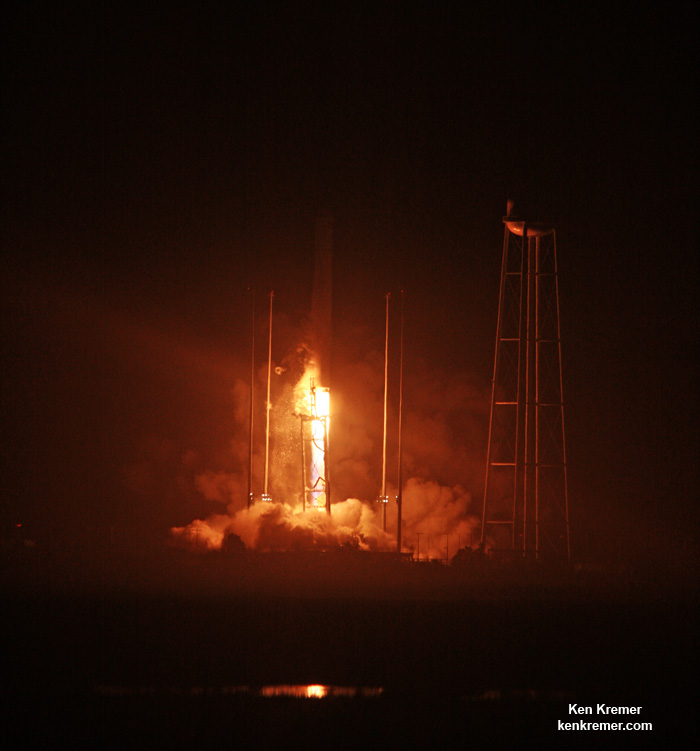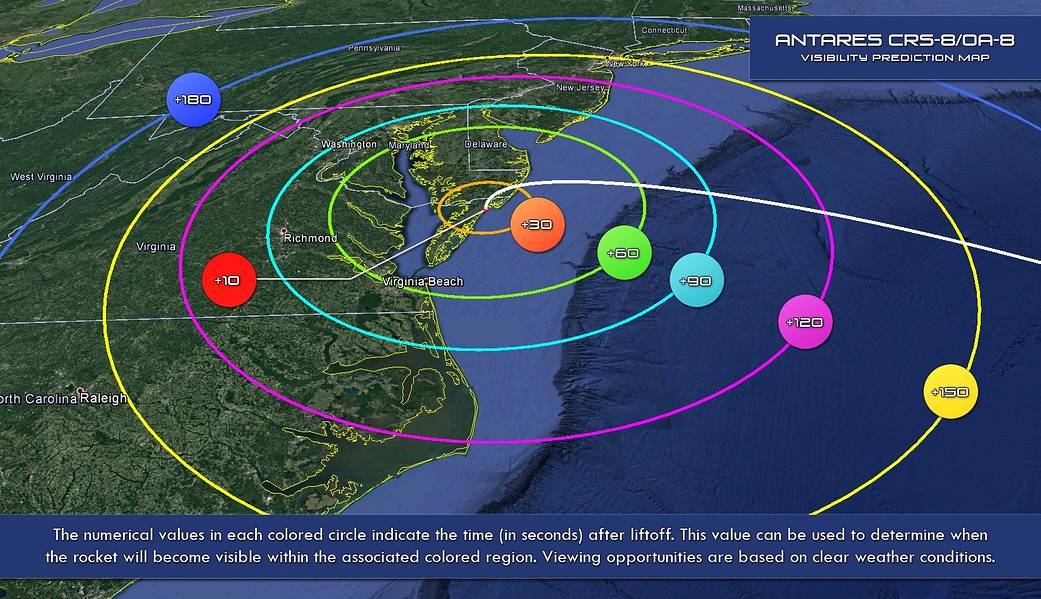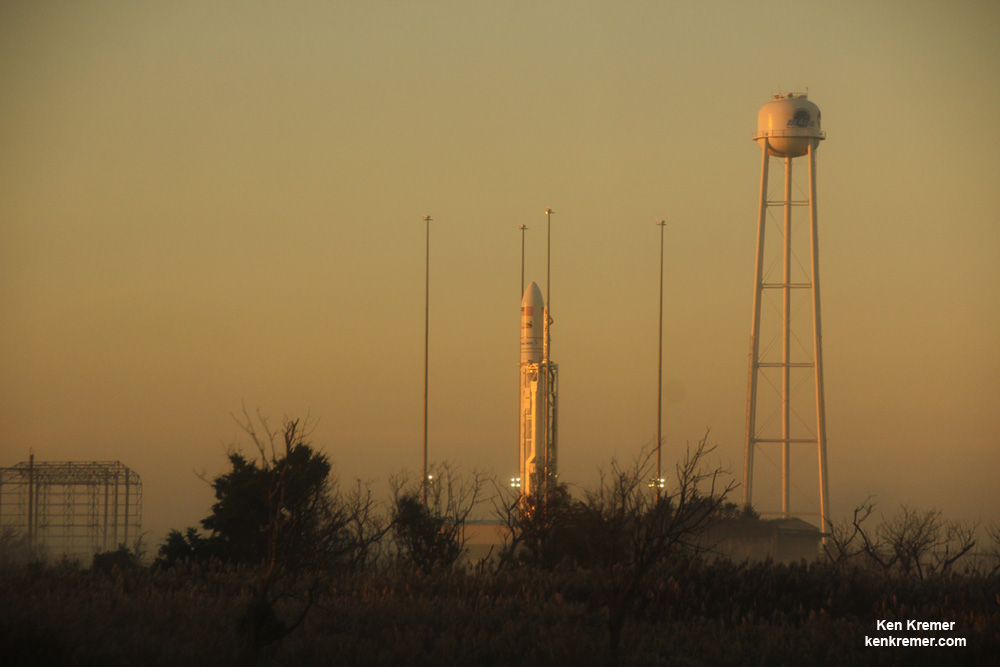
The S.S. Gene Cernan Cygnus spacecraft named in honor of the Apollo 17 lunar landing commander and launched by Orbital ATK from the eastern shore of Virgina at breakfast time Sunday, Nov. 12, arrived at the International Space Station early Tuesday morning, Nov 14, carrying over 3.7 tons of research equipment and supplies for the six person resident crew.
Soon thereafter at 5:04 a.m., Expedition 53 Flight Engineer Paolo Nespoli of ESA (European Space Agency) assisted by NASA astronaut Randy Bresnik successfully captured Orbital ATK’s Cygnus cargo freighter using the International Space Station’s 57.7-foot-long (17.6 meter-long) Canadarm2 robotic arm.
The station was orbiting 260 statute miles over the South Indian Ocean at the moment Nespoli grappled the S.S. Gene Cernan Cygnus spacecraft with the Canadian-built robotic arm.
Nespoli and Bresnik were working at a robotics work station inside the seven windowed domed Cupola module that offers astronauts the most expansive view outside to snare Cygnus with the robotic arms end effector.
The Cygnus cargo freighter – named after the last man to walk on the Moon – reached its preliminary orbit nine minutes after blasting off early Sunday atop the upgraded 230 version of the Orbital ATK Antares rocket from NASA’s Wallops Flight Facility in Virginia.
The flawless liftoff of the two stage Antares rocket took place shortly after sunrise Sunday at 7:19 a.m. EST, Nov. 12, rocket from Pad-0A at NASA’s Wallops Flight Facility in Virginia.

Sunday’s spectacular Antares launch delighted spectators – but came a day late due to a last moment scrub on the originally planned Veteran’s Day liftoff, Saturday, Nov. 11, when a completely reckless pilot flew below radar into restricted airspace just 5 miles away from the launch pad – forcing a sudden and unexpected halt to the countdown under absolutely perfect weather conditions.
After a carefully choreographed series of intricate thruster firings to raise its orbit over the next two days, the Cygnus spacecraft on the OA-8 resupply mission for NASA arrived in the vicinity of the orbiting research laboratory.
With Cygnus firmly in the grip of the robots hand, ground controllers at NASA’s Mission Control at the Johnson Space Center in Texas, maneuvered the arm towards the exterior hull and berth the cargo ship at the Earth-facing port of the stations Unity module.
1st stage capture was completed at 7:08 a. EST Nov 14.
After driving in the second stage gang of bolts, hard mate and capture were completed at 7:15 a.m.
The station was flying 252 miles over the North Pacific in orbital night at the time of berthing.
The Cygnus spacecraft dubbed OA-8 is Orbital ATK’s eighth contracted cargo resupply mission with NASA to the International Space Station under the unmanned Commercial Resupply Services (CRS) program to stock the station with supplies on a continuing and reliable basis.
NASA TV provided live coverage of the rendezvous and grappling.
Including Cygnus there are now five visiting vehicle spaceships parked at the space station including also the Russian Progress 67 and 68 resupply ships and the Russian Soyuz MS-05 and MS-06 crew ships.
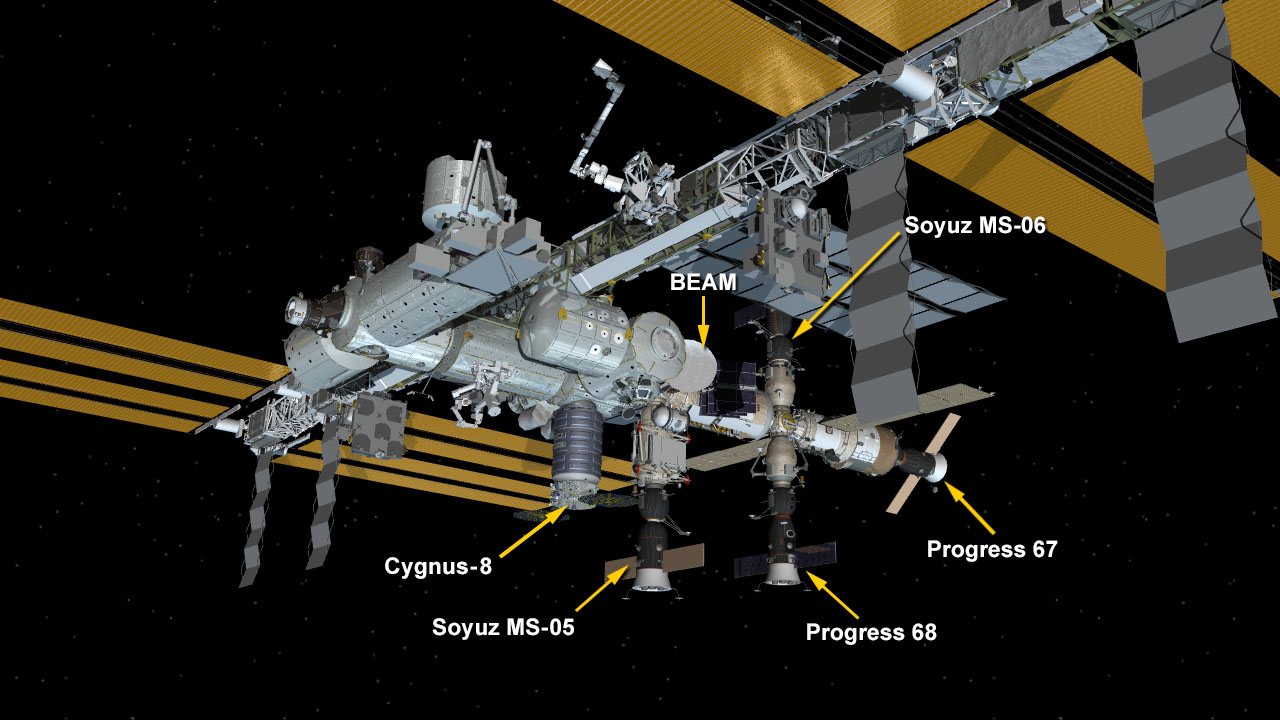
Cygnus will remain at the space station until Dec. 4, when the spacecraft will depart the station and deploy several CubeSats before its fiery re-entry into Earth’s atmosphere as it disposes of several tons of trash.
On this flight, the Cygnus OA-8 spacecraft is jam packed with its heaviest cargo load to date!
Altogether over 7,400 pounds of science and research, crew supplies and vehicle hardware launched to the orbital laboratory and its crew of six for investigations that will occur during Expeditions 53 and 54.
The S.S. Gene Cernan manifest includes equipment and samples for dozens of scientific investigations including those that will study communication and navigation, microbiology, animal biology and plant biology. The ISS science program supports over 300 ongoing research investigations.
Among the experiments flying aboard Cygnus are the coli AntiMicrobial Satellite (EcAMSat) mission, which will investigate the effect of microgravity on the antibiotic resistance of E. coli, the Optical Communications and Sensor Demonstration (OCSD) project, which will study high-speed optical transmission of data and small spacecraft proximity operations, the Rodent Research 6 habitat for mousetronauts who will fly on a future SpaceX cargo Dragon.
Cernan was commander of Apollo 17, NASA’s last lunar landing mission and passed away in January at age 82. He set records for both lunar surface extravehicular activities and the longest time in lunar orbit on Apollo 10 and Apollo 17.

Under the Commercial Resupply Services-1 (CRS-1) contract with NASA, Orbital ATK will deliver approximately 66,000 pounds (30,000 kilograms) of cargo to the space station. OA-8 is the eighth of these missions.
The Cygnus OA-8 spacecraft is Orbital ATK’s eighth contracted cargo resupply mission with NASA to the International Space Station under the unmanned Commercial Resupply Services (CRS) program to stock the station with supplies on a continuing basis.
Beginning in 2019, the company will carry out a minimum of six cargo missions under NASA’s CRS-2 contract using a more advanced version of Cygnus.
Watch for Ken’s continuing Antares/Cygnus mission and launch reporting from on site at NASA’s Wallops Flight Facility, VA during the launch campaign.
Stay tuned here for Ken’s continuing Earth and Planetary science and human spaceflight news.
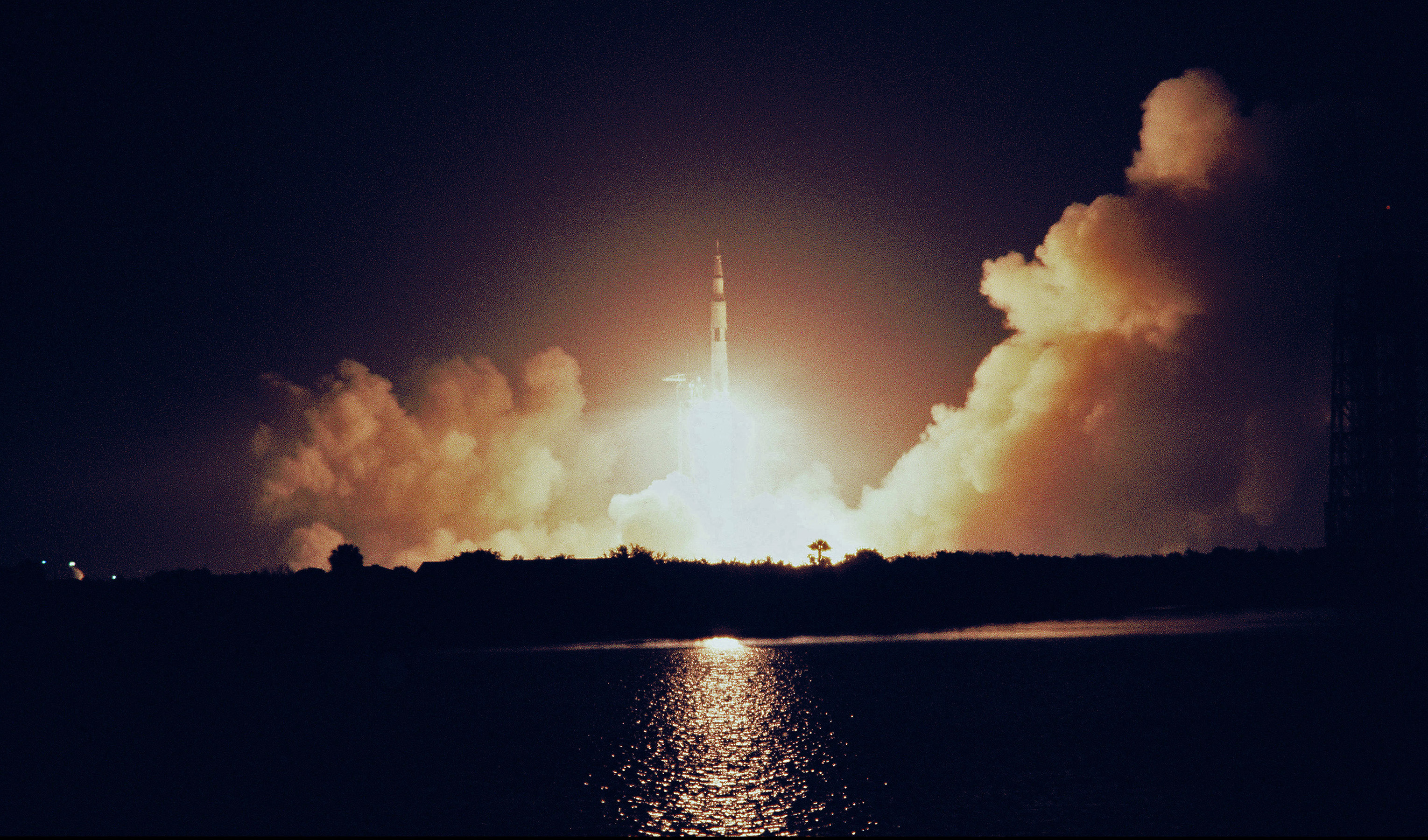
………….
Ken’s upcoming outreach events:
Learn more about the upcoming SpaceX Falcon 9 Zuma launch on Nov 16, 2017, upcoming Falcon Heavy and CRS-13 resupply launches, NASA missions, ULA Atlas & Delta launches, SpySats and more at Ken’s upcoming outreach events at Kennedy Space Center Quality Inn, Titusville, FL:
Nov 15, 17: “SpaceX Falcon 9 Zuma launch, ULA Atlas NRO NROL-52 spysat launch, SpaceX SES-11, CRS-13 resupply launches to the ISS, Intelsat35e, BulgariaSat 1 and NRO Spysat, SLS, Orion, Commercial crew capsules from Boeing and SpaceX , Heroes and Legends at KSCVC, GOES-R weather satellite launch, OSIRIS-Rex, Juno at Jupiter, InSight Mars lander, SpaceX and Orbital ATK cargo missions to the ISS, ULA Delta 4 Heavy spy satellite, Curiosity and Opportunity explore Mars, Pluto and more,” Kennedy Space Center Quality Inn, Titusville, FL, evenings
